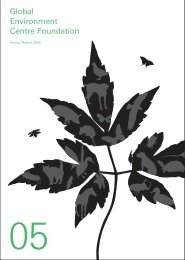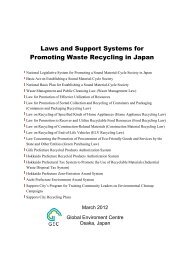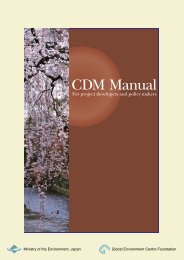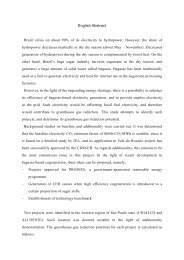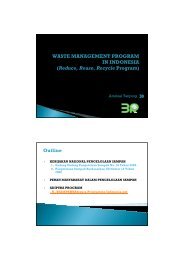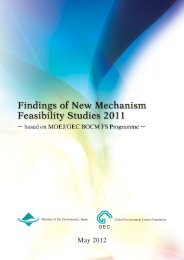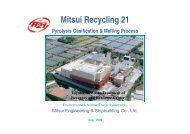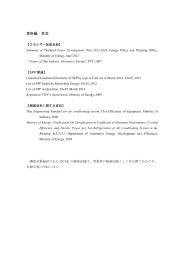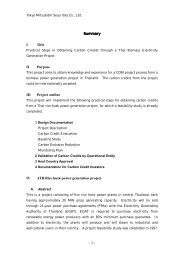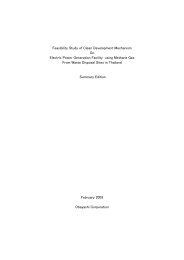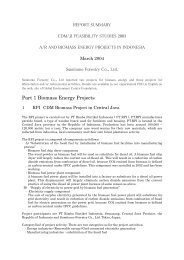PDF File - GEC
PDF File - GEC
PDF File - GEC
You also want an ePaper? Increase the reach of your titles
YUMPU automatically turns print PDFs into web optimized ePapers that Google loves.
The EB agreed to the methodological tool for determining when accounting of the soil organic<br />
carbon pool may be conservatively neglected in CDM A/R project activities [EB33, Annex 15].<br />
The EB agreed to the tool for estimation of direct nitrous oxide emission from nitrogen fertilization<br />
[EB33, Annex 16]. This tool facilitates the development and revision of baseline and monitoring<br />
methodologies for A/R CDM project activities by providing a straightforward approach for estimation<br />
of direct nitrous oxide emission from nitrogen fertilizers applied in A/R activities. According to the EB<br />
decision [EB26, para. 50]:<br />
(a) Only direct (e.g. volatilization), and not indirect (e.g. run-off), emissions of N 2 O from application<br />
of fertilizers within the project boundary shall be accounted for in A/R project activities.<br />
(b) If the only source of N 2 O emissions, which is located outside the project boundary is due to<br />
the application of fertilizer in nurseries supplying seedlings to the A/R project activity, then<br />
these N 2 O emissions (either direct or indirect), may be considered as negligible.<br />
(2) Section B. Duration of the A/R CDM project activity/ crediting period<br />
Section B.3 Choice of crediting period<br />
Project participants need to state whether the proposed A/R CDM project activity will use a<br />
renewable or a fixed crediting period (They must choose only one crediting period).<br />
(a) Renewable crediting period: A maximum of 20 years which may be renewed at most two times<br />
(maximum 60 years)<br />
(b) Fixed crediting period: A maximum of 30 years<br />
Project participants who choose a renewable crediting period should be aware that, for each renewal,<br />
a DOE determines and informs the EB that the original project baseline is still valid or has been<br />
updated taking account of new data where applicable.<br />
(3) Section C. Application of an approved baseline and monitoring methodology<br />
As mentioned earlier, project participants need to refer to the CDM website for AMs applicable to<br />
their project activities. In case an applicable methodology for the project activity does not exist,<br />
project participants need to propose a NM. In any case, the following sections need to be filled out<br />
with information taken from the methodology (either AM or NM) applied to the project activity.<br />
Section C.5. Identification of the baseline scenario<br />
Where the applied methodology requires use of the “Combined tool to identify the baseline scenario<br />
and demonstrate additionality in A/R CDM project activities” description of the identified baseline<br />
scenario for each stratum and assessment of additionality may be presented in Section C.6 and this<br />
section can be left blank.<br />
(a) C.5.1: Description of the application of the procedure to identify the most plausible baseline<br />
scenario (separately for each stratum defined in C.4.)<br />
(b) C.5.2: Description of the identified baseline scenario (separately for each stratum defined in Section<br />
C.4.)<br />
The detailed information regarding baseline is given as follows:<br />
Baseline<br />
The baseline for a proposed A/R CDM project activity is the scenario that reasonably represents<br />
the sum of the changes in carbon stocks in the carbon pools within the project boundary that<br />
would have occurred in the absence of the proposed project activity. A baseline shall cover all<br />
58



